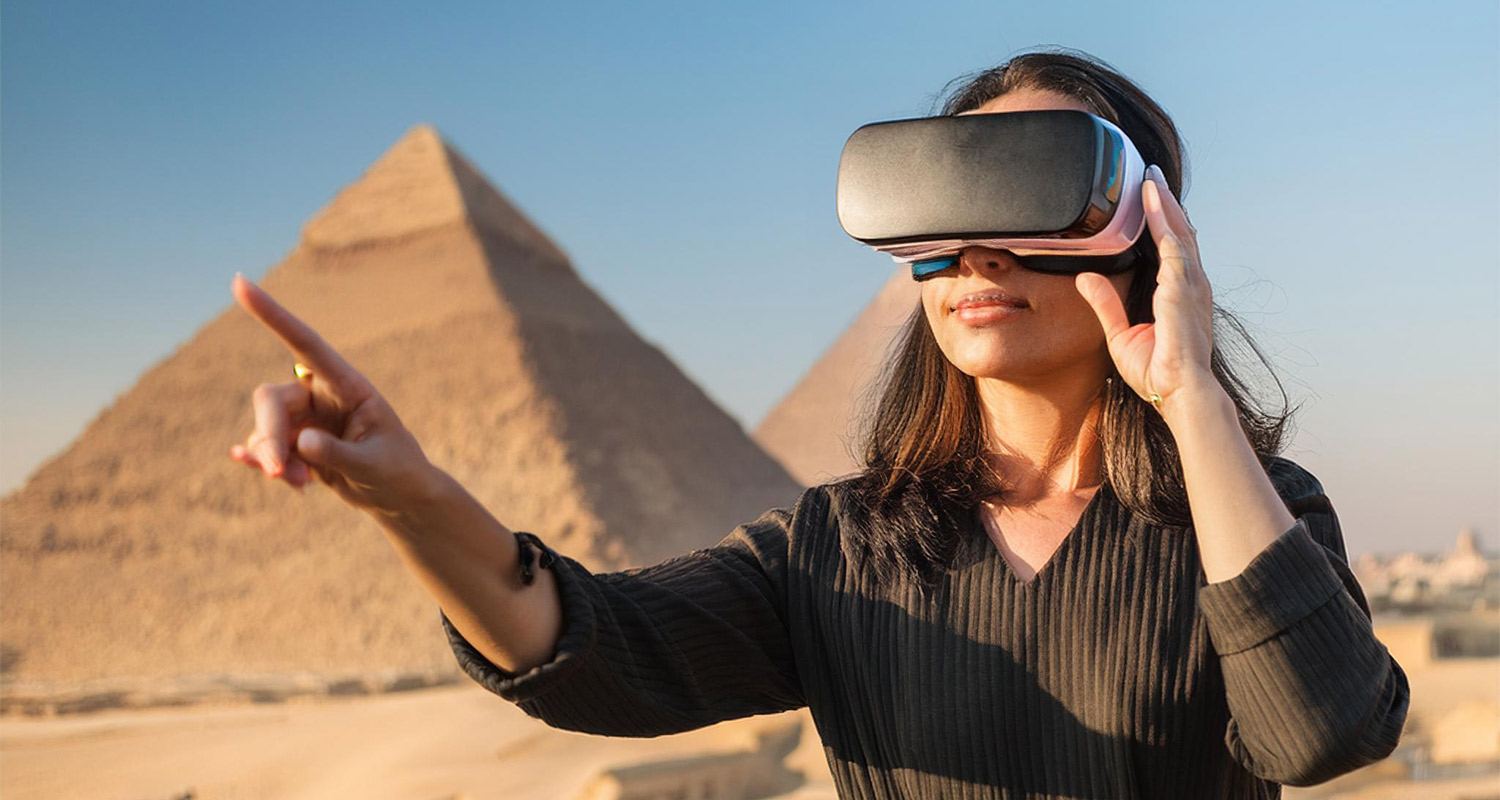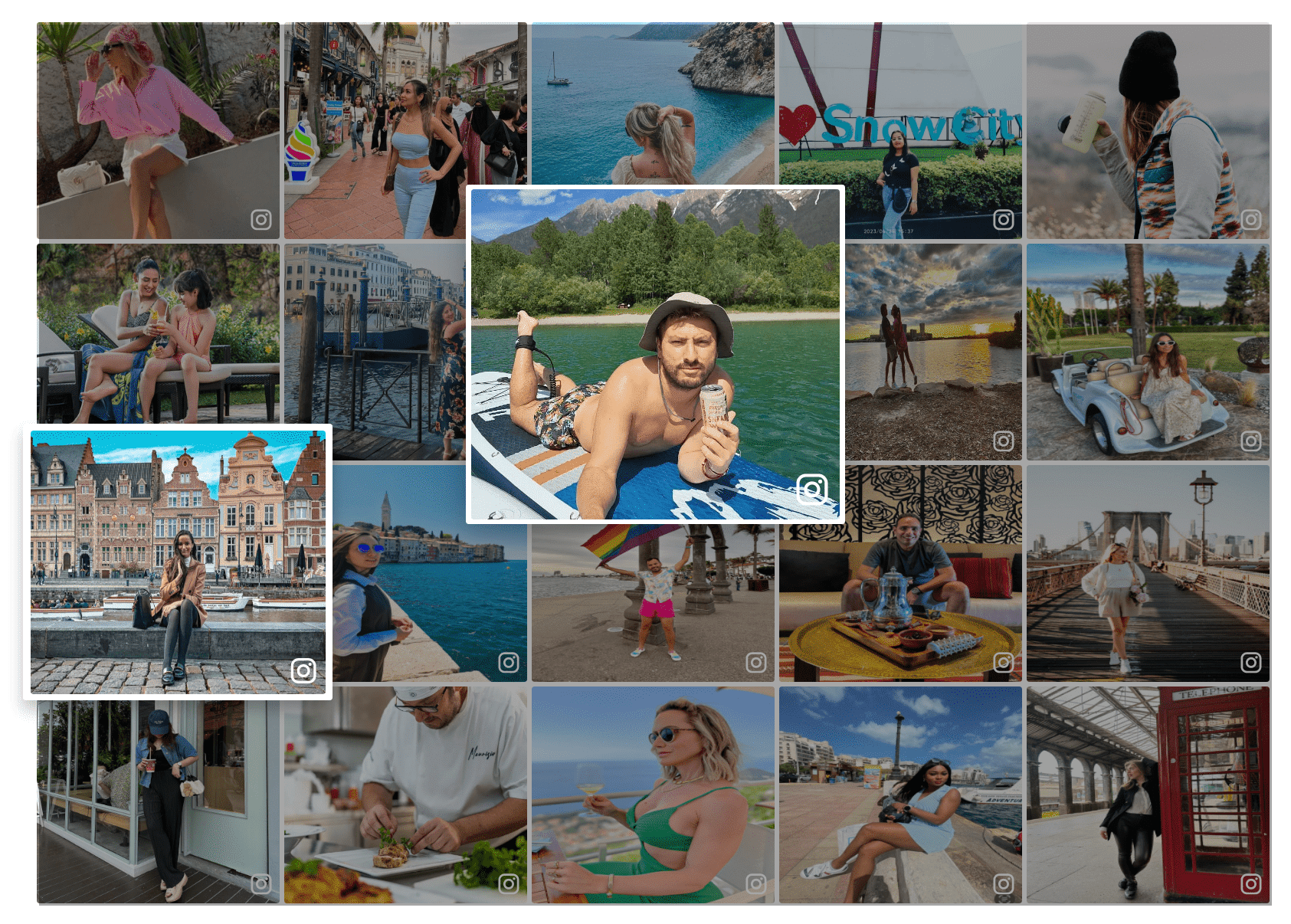The Influence of Social Media Trends on Destination Planning for Modern Tourist Itineraries

The Impact of Social Media on Travel Planning
In today’s digital age, the influence of social media on travel planning cannot be overstated. Within a few clicks, aspiring travelers can be whisked away to distant lands through vibrant imagery and engaging content. Platforms such as Instagram, Facebook, and TikTok have become essential tools in shaping travel goals, marking a significant departure from traditional travel resources like brochures and guidebooks.
Visual Inspiration
Eye-catching images posted by fellow travelers create an insatiable sense of wanderlust among users. For instance, a stunning sunset over Santorini shared on Instagram can inspire a spontaneous trip to Greece, while a TikTok video showcasing the scenic views of the Rocky Mountains might prompt a camping adventure in Colorado. As travelers scroll through their feeds, they encounter picturesque settings, unique accommodations, and exotic culinary delights, making certain destinations appear irresistible. The power of visual media to evoke emotions and stir the desire to explore is a key element driving modern travel planning.
Real-Time Recommendations
Additionally, real-time recommendations from social media influencers have become vital in enhancing travel experiences. Travelers are increasingly influenced by the curated experiences shared by influencers who visit destinations ahead of the crowds. For example, travel bloggers may rate quaint cafés in Paris or unveil secret hiking trails in the Pacific Northwest. This immediacy of information allows for dynamic planning, where visitors can bypass tourist traps and discover hidden gems, thus transforming their journeys into personalized adventures.
User-Generated Content
The trust factor associated with user-generated content further underscores the impact of social media on travel planning. According to recent studies, travelers are more likely to rely on peer reviews on platforms like TripAdvisor or Yelp rather than promotional materials from businesses. This shift indicates that prospective visitors value authentic experiences over glossy advertisements. As a result, even lesser-known destinations are gaining traction, with social media allowing them to cultivate a narrative that appeals to curious explorers.
Curating Unique Experiences
As tourists seek unique experiences, they are increasingly relying on hashtags, geotags, and viral challenges to guide their itineraries. This trend has prompted destinations to actively market themselves through captivating visuals and savvy engagement strategies. For instance, the #vanlife hashtag has inspired a surge in road trips across the United States, with travelers exploring the scenic views of the Pacific Coast Highway and the quirky roadside attractions that dot the landscape.

The democratization of travel advice ensures that anyone with access to the internet can impact travel choices. This phenomenon allows small towns, previously overshadowed by larger destinations, to rise in fame. A single viral post can elevate an unassuming café or a hidden beach into a must-visit site, showcasing how social media can shift the power dynamic in tourism.
In conclusion, the intricate relationship between social media trends and modern tourist itineraries is reshaping the travel landscape. As these platforms continue to influence traveler preferences and behaviors, it is crucial to delve deeper into their implications on the tourism industry. The evolving nature of travel planning, driven by digital innovation and a collective sharing culture, opens new avenues for exploration and engagement that both travelers and destinations are keen to embrace.
DIVE DEEPER: Click here to discover optimization techniques
Understanding Social Media’s Role in Shaping Travel Choices
The rapid evolution of social media has transformed the travel landscape, with platforms serving as pivotal resources for tourists aiming to craft their itineraries. With millions of posts tagged with location-specific hashtags, travelers find a wealth of information at their fingertips, allowing for a more informed and engaging planning process. Understanding the various elements of social media’s influence on travel can shed light on how modern itineraries are being shaped.
The Power of Social Proof
Social proof plays an influential role in the decision-making process for today’s travelers. When potential tourists see photos and videos of friends or influencers enjoying their adventures, it cultivates a sense of reassurance that the destination is worth visiting. This phenomenon hinges on the idea that if many others have enjoyed their experiences at a particular location, it must be worthwhile, thereby validating the choice for prospective tourists.
According to a study conducted by the American Express Global Business Travel, approximately 70% of millennials claim that social media influences their travel decisions and destinations. With this demographic being the largest group of travelers, their preferences are beginning to dictate the future of tourism. As these digital natives document their journeys, destinations get exposure through engaging posts that boost their allure to similar audiences.
Trends in Digital Discovery
The rising trend of digital discovery has birthed unique travel niches, allowing tourists to seek experiences that align with their personal interests. Here are some notable trends that have emerged:
- Food Tourism: Travelers are increasingly looking for culinary experiences, inspired by videos of local food markets and “eat with a local” initiatives shared online.
- Adventure Tourism: Thrill-seekers are chasing challenges showcased on platforms like TikTok, such as extreme hiking trails, mountain biking, and zip-lining.
- Cultural Exploration: Many are stepping off the beaten path to engage with local cultures and communities, prompted by stories and posts highlighting authentic experiences.
These trends reflect a shift towards personalization in travel, prompting destinations to rethink their marketing strategies. No longer is it sufficient to present a range of activities; potential visitors now seek unique and customized experiences that can set their adventures apart.
The Importance of Hashtags and Geo-Tags
In the age of social media, hashtags and geo-tags have emerged as tools for explorers to navigate through the cluttered landscape of content. Tourists frequently employ specific hashtags to pinpoint the right locations and experiences they desire. Moreover, geo-tags provide context and help users visualize their experiences, making them more appealing and relatable. Common travel hashtags such as #travelgram, #wanderlust, and #igtravel not only assist travelers in their search but also help small businesses gain visibility amongst potential patrons.
As destinations strive to be featured on trending social media pages, they are continuously encouraged to refine their appeal to capture the attention of digital-savvy travelers. The interplay between an appealing online presence and traveler engagement further emphasizes the necessity of adapting to the ever-changing social media landscape.
As we delve further into the specific trends and behavioral changes instigated by social media, it becomes evident that these platforms are not just tools for sharing experiences; they are integral components of destination planning in modern tourism.
The Role of User-Generated Content (UGC) in Shaping Tourist Choices
User-generated content (UGC) is a pivotal element in modern travel planning, largely driven by the impactful presence of social media. Travelers increasingly turn to platforms like Instagram, TikTok, and Facebook for inspiration and information, effectively creating a vibrant ecosystem of travel recommendations. Pictures and videos shared by fellow tourists serve as authentic testimonials, significantly influencing destination choices. According to recent studies, 79% of travelers report that social media shifts their perception of a destination. Moreover, UGC carries a level of authenticity that polished advertisements simply cannot match. When potential tourists see real experiences from others, they feel a stronger connection to those locations, sparking their desire to visit. For instance, viral travel trends can turn previously hidden gems into must-visit hotspots, offering travelers novel experiences that they might not have considered otherwise.
Social Media Challenges: Misinformation and Over-tourism
While social media serves as a powerful tool for destination marketing, it is not without pitfalls. The abundance of misleading information can lead travelers to choose attractions falsely depicted as idyllic, resulting in disappointment. Additionally, popular social media sites contribute to over-tourism, where locations become overcrowded due to their newfound fame. Spots like the “Secret Instagrammable Location” can quickly turn from serene retreats to bustling tourist traps, altering the travel experience. Tourism boards need to respond proactively to these challenges by promoting honest portrayals and emphasizing sustainable tourism practices. Content creators play a crucial role in maintaining a balance by sharing both the highlights and genuine experiences of their travels, thereby fostering a more holistic approach to destination planning.
| Category | Description |
|---|---|
| User-Generated Content | Authenticity in travel recommendations through peer experiences. |
| Impact on Destination Choices | Influence of social media content in shaping and enticing potential travelers. |
As social media continues to evolve, its influence on modern tourist itineraries will likely deepen, making it essential for travelers and tourism authorities to navigate this landscape wisely.
DISCOVER MORE: Click here for insights on planning themed itineraries
Utilizing Influencer Partnerships and User-Generated Content
As tourists increasingly turn to social media for travel inspiration and information, the role of influencer partnerships has gained tremendous traction. Brands and travel destinations are now recognizing that influencers serve as vital intermediaries who can authentically resonate with their target audience. One recent statistic indicates that 49% of individuals</strong rely on influencer recommendations when making travel decisions, highlighting the shifting dynamics of traditional advertising to more organic encounters with potential travelers.
Influencers, often seen as digital storytellers, enable destinations to showcase their offerings in an engaging manner that feels relatable and genuine. This perception is critical, especially for millennials and Generation Z, who are less receptive to overt marketing tactics. Instead, they gravitate towards the experiences shared by trusted figures. For example, an influencer visiting the beautiful landscapes of the American National Parks can spark a wave of interest among followers looking to integrate those breathtaking vistas into their itineraries.
Additionally, the concept of user-generated content (UGC) plays a pivotal role in modern travel planning. Travelers are encouraged to share their experiences using specific hashtags, and as they do so, they contribute to the growing pool of content that can be used to inspire future tourists. A collection of real-life experiences provides a sense of authenticity that is hard to achieve through standard marketing methods. Destinations are now leveraging UGC in their promotional materials, from social media ads to official websites, effectively allowing potential visitors to visualize their path through firsthand accounts.
The Rise of Experiential and Thematic Travel
There is a marked shift towards experiential travel fueled by content shared on social media. This trend sees travelers moving away from traditional sightseeing in favor of immersive experiences tailored to specific themes or interests. For instance, with the rise of platforms like Instagram and TikTok, activities such as wellness retreats, art tours, and sustainable travel experiences have skyrocketed in popularity.
Data suggests that nearly 60% of millennials want their vacations to be filled with unique activities and experiences that reflect their personal brands and lifestyles. Social media platforms offer a plethora of ideas, from yoga on the beach in Tulum to guided street art tours in urban neighborhoods of New York City. Influencers pave the way by showcasing these experiences in captivating ways, prompting their followers to seek out similar adventures.
The Impact of Trends on Travel Behavior
The emerging trends facilitated by social media are not just fleeting; they significantly alter travel behavior. Travelers today tend to book trips and activities based on social media recommendations, often prioritizing experiences that align with trending themes. Whether it’s a specific location that’s gone viral on Instagram or a new adventure trend gaining traction on TikTok, the influence of social media on travel preferences is undeniable.
Research by the Eventbrite suggests that nearly 75% of millennials base their travel decisions on experiences shared by others online, driving tourism trends toward locations and activities that might have previously been overlooked. This shift marks a transformative change in how travelers curate their itineraries, balancing personal interests with the urge to capture and share their experiences with their own social media networks.
As these trends continue to merge with evolving consumer preferences, destinations are compelled to stay ahead of the curve by adopting innovative marketing strategies and enhancing user experiences to draw in a socially driven audience. Social media, in essence, has not only changed how we gather travel information but has also created a vibrant, interconnected travel community eager to explore the world in ever-new and exciting ways.
DON’T MISS OUT: Click here to learn how to manage unexpected expenses
Conclusion: The Transformational Role of Social Media in Tourism
In conclusion, the influence of social media trends on destination planning has revolutionized the landscape of modern tourism. Travelers are no longer passive recipients of information; instead, they actively engage with social platforms to curate meaningful itineraries that reflect their interests and lifestyles. Through the lens of influencer partnerships, destinations can leverage authentic storytelling that resonates with potential visitors, effectively bridging the gap between marketing and genuine exploration.
The shift towards experiential and thematic travel emphasizes the desire for immersive experiences that go beyond traditional sightseeing. As data reveals, nearly 60% of millennials prioritize unique activities that align with their personal brands, a trend fueled by the visually-driven content found on platforms like Instagram and TikTok. These platforms not only inspire individual travelers but also foster a community eager to share and explore diverse experiences across the globe.
Moreover, the power of user-generated content cannot be understated. As travelers document their journeys and curate authentic narratives, they contribute to a vast database of inspiration for others, reshaping travel behavior in profound ways. The statistic that almost 75% of millennials make travel decisions based on social media suggestions highlights just how intertwined social validation and travel planning have become.
As we look to the future, it is clear that tourism stakeholders must adapt to these trends by implementing innovative strategies that prioritize the needs and preferences of a socially engaged audience. The future of travel is not just about destinations; it is about the stories, experiences, and connections that travelers forge through the dynamic world of social media. In embracing these changes, the tourism industry can not only attract but also cultivate a new generation of explorers with a passion for discovery.


